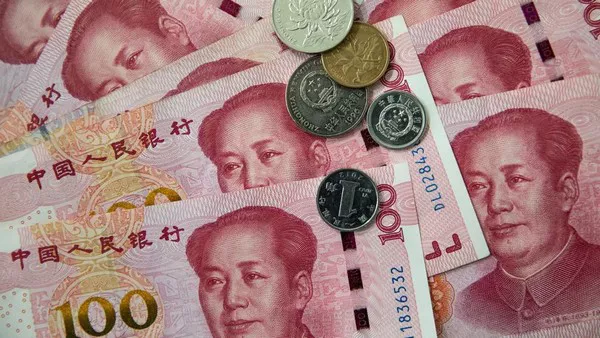This morning, seemingly unstoppable moves in the U.S. dollar were weighed down by two currencies that have done almost everything to underpin the U.S. dollar’s strength so far: the Japanese yen and the Chinese yuan. Bank of Japan Governor Kazuo Ueda said in an interview that if wages continue to rise, policymakers may have enough information by the end of the year to decide to remove some monetary stimulus. The market reacted strongly to this. USD/JPY is falling from overbought conditions and testing 146.00, with benchmark JGB yields at 0.70%, despite the Bank of Japan deploying a loan-for-bonds program to curb yields. The timing of Ueda’s interview may indicate the BOJ’s intention to support the yen without intervention – in any case, undue concern about the speed of the yen’s depreciation would not warrant intervention.
In China, authorities have reintroduced strong defenses against the yuan. Late last week, there was a growing consensus that China’s central bank was beginning to tolerate further depreciation in the yuan as USD/CNY rebounded above 7.30. While significantly raising the central parity rate of the yuan, the People’s Bank of China issued a statement saying that market participants should “consciously maintain market stability” and avoid speculative transactions. The U.S. dollar has generally weakened this morning, helping USD/CNY return below 7.30.
This morning’s change in USD action has clearly been driven by actions by the Bank of Japan and the Bank of China, but whether USD/JPY and USD/CNY can maintain pressure will depend on the greenback’s reaction to its domestic drivers. This week is shaping up to be a busy week for U.S. data, with the latest releases tending to be quite positive for the dollar.
The main highlight on the US calendar this week is Wednesday’s CPI report, which is widely expected to show a rebound in inflation in August, and our economics team believes there are upside risks to the consensus forecast. Core CPI is expected to be 0.3% month-on-month, an acceleration from 0.2% month-on-month in recent months. There are no noteworthy data releases today, but we will see the NFIB survey, retail sales and industrial production data later this week.
The Federal Open Market Committee has entered a pre-meeting hiatus, but the latest signs clearly point to a pause in rate hikes in September. Can inflation change policymakers’ minds? This may require stronger money printing than expected, but from a FX perspective, the bullish effect on the US dollar is expected to be felt. The market is still likely to tighten a further 11 basis points before the end of the year and further fuel interest rate cut expectations. The two-year U.S. dollar swap rate (OIS) could retest August’s high of 4.94% and offset a boost to their currencies from the Bank of China (possibly sequential) and the Bank of Japan (more likely a one-off move by Ueda) s hard work.


